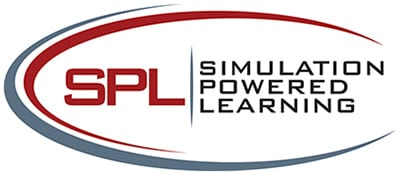 In the last article, How Guided Team Autonomy Drives Successful Agile, I presented a simple matrix that highlighted how alignment enables autonomy. High alignment, whether through coercion or collaboration, practically guarantees everyone on the team will be pulling in the same direction and producing results. However, while short-term achievements might be gained with Theory X approaches, sustainable productivity, innovative teamwork and high morale require higher levels of autonomy. If you are seeking high levels of alignment and autonomy, I suggest that you start with alignment to create an environment where autonomy is more easily enabled and then leveraged.
In the last article, How Guided Team Autonomy Drives Successful Agile, I presented a simple matrix that highlighted how alignment enables autonomy. High alignment, whether through coercion or collaboration, practically guarantees everyone on the team will be pulling in the same direction and producing results. However, while short-term achievements might be gained with Theory X approaches, sustainable productivity, innovative teamwork and high morale require higher levels of autonomy. If you are seeking high levels of alignment and autonomy, I suggest that you start with alignment to create an environment where autonomy is more easily enabled and then leveraged.
Gaining alignment in a fast-paced and constantly changing work environment — often with geographically dispersed, culturally diverse teams — is not easy. So, let’s look at some of the ways we as leaders and team members can drive alignment, and with that allow autonomy to build.
Values and Vision Are Just the Start
First of all, let’s separate the two levels of alignment: alignment of values, vision and mission (strategic) and alignment of work to goals (tactical). Most organizations go to great lengths to define their values, vision and mission, and regularly communicate them at high-profile events. They advertise with them, post them on corporate websites, hang posters in the hallways and even put them on business cards. Now, I don’t want to imply these regular reminders are not great things to do. They are. But this strategic alignment is just too far removed from everyday actions to effectively guide tactical decisions. Values, vision and mission are the backdrop for the play, not the actual stage on which the work is done and the future is acted out.
When I think of tactical alignment, I think about keeping the people and the work directionally correct to the goals, as opposed to staying “on plan,” (which is only a preconceived notion of correct when you knew less than you know today). To accomplish this I practice consistently communicated, clearly articulated, empirically measurable, incremental finish lines. That’s quite a mouthful, so let’s break it down.
Consistently Communicated – Create the Drum Beat
I recently worked with a group that was instituting a major change that impacted hundreds of people. In spite of several formal communications, both written and oral, most of the affected people said they were unaware of the planned changes. Leadership was surprised to hear this. We have to keep in mind that just because something is said doesn’t mean it is heard.
Tell them what you are going to tell them, tell them, and then tell them what you told them. It is virtually impossible to communicate too much. I’ll bet you’ve never heard that before. That doesn’t mean it isn’t worth mentioning again. It is virtually impossible to communicate too much when driving alignment. Say it, explain it, and say it again. Get my point?
I joke with my wife of 20 years when I tell her, “When we got married I told you I love you. If anything changes, I’ll let you know.” As you can imagine, this doesn’t work. Absent the regular drum beat of communication, rumors and confusion creep into the conversation. People hear through their individual filters and blockers, and without this consistent cadence of communication people will create what they want to hear.
Clearly Articulated – Create a Visual of the Finish Line
No matter how much we do communicate, there is always more unsaid. We all fill in the blanks — and there are always blanks — with what we want to hear. Words are naturally ambiguous, but a picture never lies. (Photoshopped pictures of Kim Kardashian don’t count.) Pictures create a clearly understandable image of the future state. It is there in black and white, or preferably color. It removes assumptions and reduces misinterpretations. Steven Covey’s second habit is Begin with the end in mind. The more clearly you can paint that image of the end, the easier it will be for people to align to it.
You can never be certain how your words are going to be received and interpreted, and you are not in control of that. However, you can attempt to put yourself in the shoes of your audience and ask yourself, “How might this be interpreted other than how I intend it?” This simple act, though admittedly not easy and potentially very time-consuming, helps clearly articulate the future through the eyes of your audience. Try this before sending that next email or text.
Empirically Measurable – Transparency of Progress
Consistently communicated and clearly articulated goals are essential for alignment. After all, what else would we all be aligning to? What I find is, while these goals may exist, and even publicly expressed in words, they are not always in an empirically measurable form. Some leaders may feel that since they discuss goals frequently at their level and are possibly even compensated explicitly for achieving them, the goals are clearly articulated and therefore measurable. Unfortunately, the rest of the team is not privy to all those conversations and is often left wondering how certain actions align with the more vague values, vision and mission.
We’ve all heard the saying, “What gets measured gets done.” This is because regular measurement of empirical outcomes keeps you focused and therefore aligned. If you are going to paint the picture, you need to be able to see progress toward the final product. Empirically measurable evidence of progress is a direct feedback loop to let us know exactly where we are at. We need to use those feedback loops to assess our progress toward our goal. Getting the team involved in creating the metrics of their own success is a great way to not only gain alignment, but also foster autonomy.
Incremental Finish Lines – Markers of Success
In an earlier article, Planning Horizons, I wrote about the importance of short-term plans with clear deliverables to keep the team focused. These incremental finish lines provide both a sense of accomplishment and success as well as evidence that the team is truly moving in the direction of the larger long-term goals. The more change and uncertainty in front of the team, the more important it is to set short-term goals and celebrate progress incrementally.
It is hard to sustain a sprinter’s pace when the goals are out of sight. Books are broken into chapters and chapters into paragraphs. This is not only to aggregate similar thoughts but also to help the reader consume the information in digestible chucks. Who doesn’t try to finish a chapter before putting down a book? With the achievement of each incremental finish line, there is a mini-celebration and a sense of accomplishment that recharges the team. This completion point is a perfect time to pause, realign, and hit the reset button for the next incremental finish line.
The Promise of High Alignment/High Autonomy
Working in a high autonomy/high alignment environment is not just a feel-good idea. Properly aligned and autonomous teams have fewer talent and time shortages because the autonomy will uncover the untapped potential of the team. People in self-organizing teams thrive on the self-centered elements of autonomy, and alignment and a sense of incremental achievement can get them there.
The Power of the Jigsaw Puzzle
Growing up I loved doing jigsaw puzzles, and I shared this enjoyment with my daughters, too. We typically had a table in the basement with a puzzle and pieces in some state of completion. The picture of completion was on the cover of the box, propped up for all to see. Progress was empirically measurable and typically made in small increments by completing small, recognizable groups of pieces that contributed to the total puzzle picture. When you needed a sense of progress you could always go to the puzzle table and put together a few pieces, then step back and see the progress made. The sense of satisfaction over the incremental progress was both motivating and an inspiration to do more. Progress toward a goal is engaging!
The projects and puzzles we solve at work are more complex and challenging than simple jigsaw puzzles, but the same principles apply. If you want self-organizing, autonomous teams, think consistently communicated, clearly articulated, empirically measurable, incremental finish lines and you will be rewarded with teams that are motivated, inspired and most importantly, aligned.
